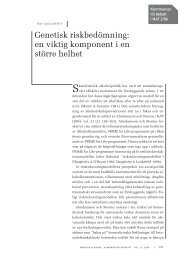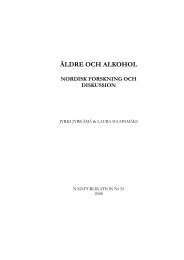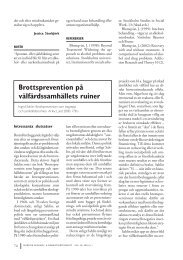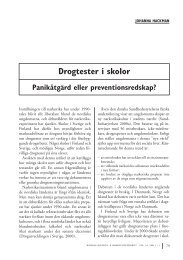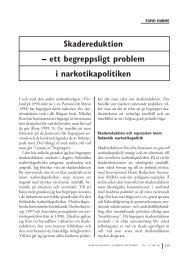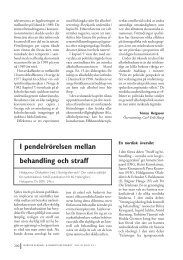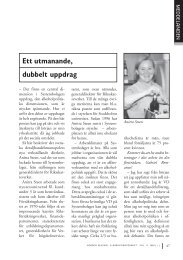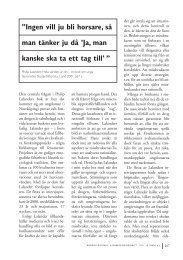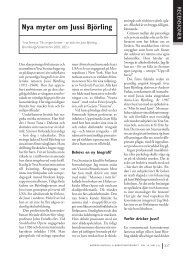CONGENITAL RUBELLA SYNDROME
CONGENITAL RUBELLA SYNDROME
CONGENITAL RUBELLA SYNDROME
Create successful ePaper yourself
Turn your PDF publications into a flip-book with our unique Google optimized e-Paper software.
Presentation of visual stimuli and pupillary responses have also been used to<br />
measure arousal and habituation (Kim, Beversdorf & Heilman, 2000).<br />
Arousal level and habituation is normally measured by registering the skin<br />
conductance reaction to sound. In the test situation the person is exposed to<br />
auditory stimulation with varying intervals. The human skin has properties of<br />
electrical conductance, as well as electrical resistance. The measurement of the<br />
electro-physiological activity of the skin (Skin Conductance, Galvanic Skin<br />
Resistance, and Skin Potentials) reflects activity in the autonomous nervous<br />
system. The autonomic sympathetic activity is influenced by the arousal or<br />
activating system. Skin conductance tests are applied to assess the ability of the<br />
brain stem to perform normal reaction. For example, studies by Satterfield &<br />
Dawson (1971) and by Kløve & Hole (1979) found that hyperactive children had a<br />
lower skin conductance level and a more rapid habituation rate to auditory stimuli<br />
than control children, thus indicating a state of central hypoarousal in hyperactive<br />
children.<br />
The activating system of the brain<br />
When we refer to activation or arousal, we are talking about the generalised,<br />
undifferentiated, central activating system response which has two important<br />
dimensions: the general activation of the cortex and the general activation of the<br />
nervous system, notably the sympathetic part.<br />
This activating system of the brain consists of the reticular formation and certain<br />
other subcortical structures (thalamus among others). The reticular formation is<br />
localised in the brain stem. The reticular activating system plays a crucial role not<br />
only in activating the cortex but also for behavioural arousal. Independently of the<br />
source of stimulation this system produces excitatory effects on the cortex, and<br />
through this mechanism the organism can be awakened or aroused by various<br />
stimuli. Moruzzi and Magoun (1949) found that the stimulation of the reticular<br />
formation led to cessation of cortical electrical activity characteristic of drowsiness<br />
and sleep, and a switch to electrical activity associated with wakefulness.<br />
According to Luria (1973) the role of the activating system is to maintain an<br />
optimal level of cortical tone which is essential for the organised course of mental<br />
activity.<br />
The reticular formation consists of diffuse collections of cells and fibres in the<br />
central core of the brain stem. It stretches from the spinal cord and up to the<br />
thalamus and has connections to several parts of the brain (Brodal, 1990). Fibres<br />
from each of the sensory systems (with the exception of the olfactory system) send<br />
off branches to the reticular formation as they pass through the brain stem on their<br />
way to the cortex. The reticular formation is sometimes called a non-specific<br />
9



